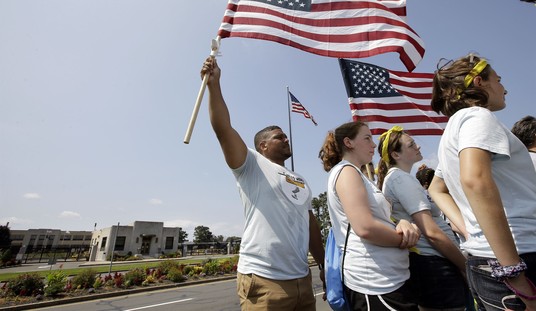Our presidential elections, pundits sometimes remind us, are not national contests, but rather contests in 50 states and the District of Columbia. And since most states lean heavily to one party or the other these days, the only real contests are in a dozen or so target states.
Once upon a time, most states were in play. In the 1976 contest between Gerald Ford and Jimmy Carter, 30 states with 396 electoral votes were carried by less than 10 percent of the votes. Three-quarters of voters lived in those states.
In 2008, the field of play was much smaller. The candidates' percentage margins were less than 10 percent in only 15 states with 159 electoral votes. Less than one-third of voters lived in those states.
In 1976, all of the eight largest states were carried by less than 10 percent. In 2008, only two, Florida and Ohio, were.
Admittedly, 1976 was an extreme case. Both nominees were from regions -- south Georgia, outstate Michigan -- that were their parties' historic heartlands but where each party was in long-term decline. And 2008 was an extreme case in the other direction.
But while the list of target states has become shorter, it isn't etched in stone. It can change from election to election.
There's a tendency to ignore this because in recent history, from the middle 1990s to the middle of the past decade, voting behavior was unusually static. Only three states cast their electoral votes for different parties in the 2000 and 2004 elections.
But voters in different states and regions don't always move in tandem. The 2008 election was a good example. 2012 seems to be another.
Several analysts have noted that Barack Obama seems to be stronger in recent target state polling than one might extrapolate from national polls.
Recommended
Some have argued that this is due to overly Democratic samples in some cases. Others have argued that it represents a response to ads attacking Mitt Romney's business record.
Each explanation is plausible. But I've noticed something else looking at the realclearpolitics.com average of recent polls in states on various target lists and comparing Obama's current percentages in polls with his percentage of the actual vote in November 2008.
In three states, Obama currently is polling only 3 or 4 percent below his actual vote in 2008 -- North Carolina, Florida and Ohio. Probably not coincidentally, these were three of the four states where his winning percentages were lowest (in the fourth, Indiana, he seems far behind this year).
In 2008, the Obama campaign was able to spot openings in previously safe Republican states and use its money advantage to carry them. It looks like the 2012 Obama campaign has been concentrating its money, as well as appearances by the president and cabinet members, in these three states with 62 electoral votes in the hope that they will be a firewall preventing Romney from reaching the 270-vote majority.
But it looks like the Obama forces won't be able to heavily outspend the Republicans from now on. And the risk is that if opinion moves against them by a few more points in these firewall states, it will also do so in other states that weren't necessarily on the target list in 2008 but are now.
These include the manufacturing states of Michigan and Indiana, with 27 electoral votes, where Obama's current poll numbers are nearly or more than 10 percent behind his 2008 showing, and Missouri, with 10 electoral votes, which he nearly carried in 2008 but which now looks out of reach.
They also include six states with 46 electoral votes that have very low percentages of black voters -- Colorado, Iowa, Minnesota, New Hampshire, Oregon and Wisconsin. Obama carried all of these handily, but his current polling is seven to nine points behind his 2008 percentage.
And they include Virginia, with 13 electoral votes, the one state that matched the national percentages for Obama and John McCain and where Obama's current polling lead is 47 percent to 44 percent.
All of these 10 states, with 96 electoral votes, cast more votes for Republicans than Democrats in 2010 House elections. That was true also in Pennsylvania and Nevada, which together have 26 electoral votes.
Poll numbers are imprecise and subject of course to change. My point is that the list of target states has changed and gotten larger -- and could change and grow even more.

























Join the conversation as a VIP Member